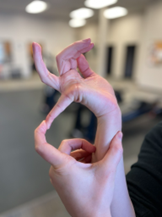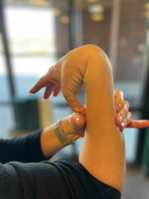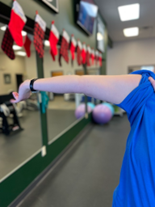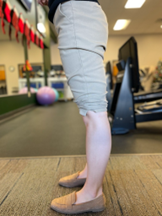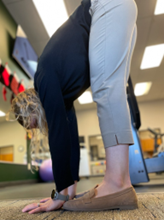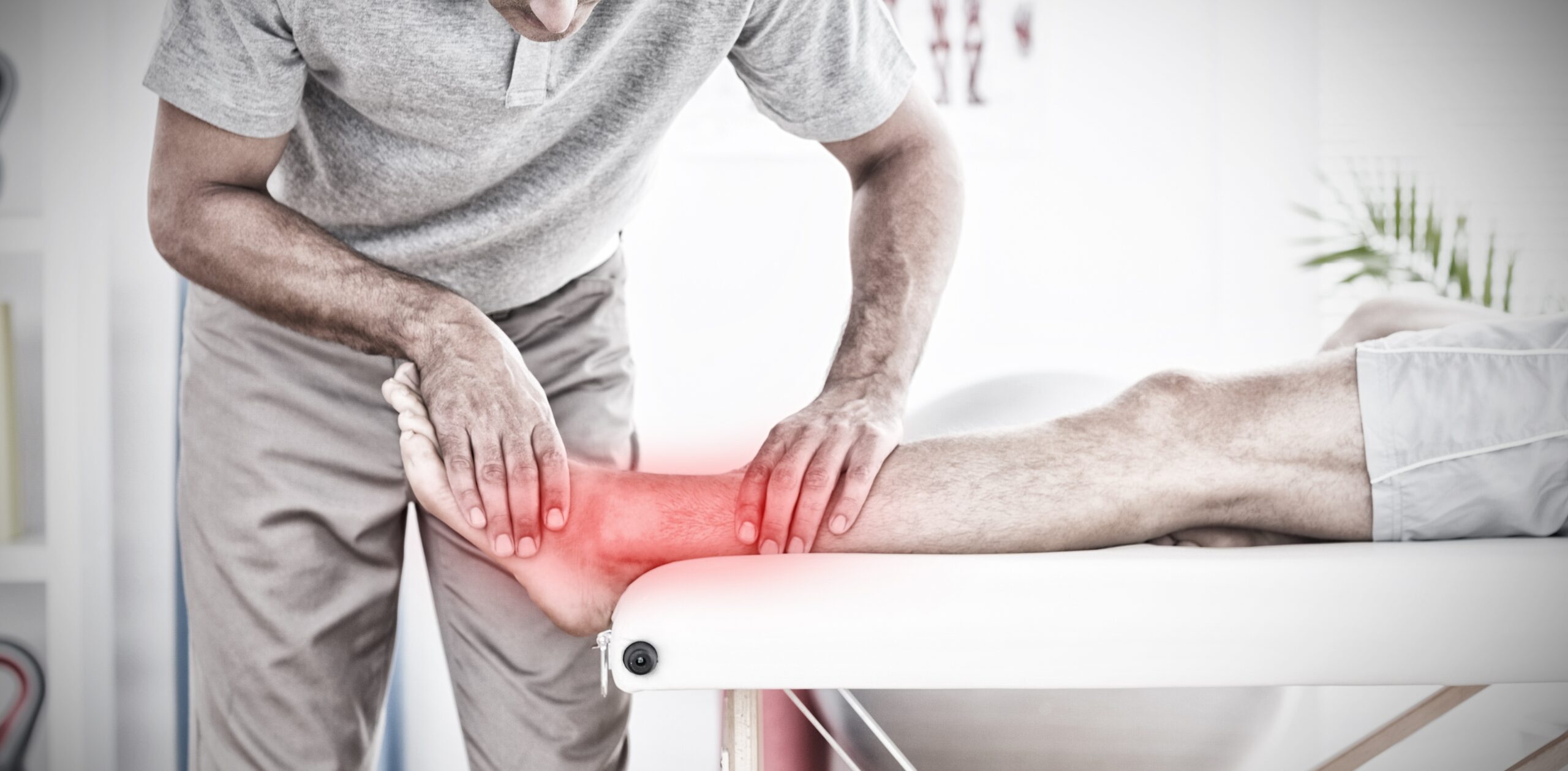
01 May Are You Hypermobile? How to Tell & How it Can Impact You!
We’ve all been told our entire lives that we should stretch to help our muscles become more flexible. Actually, for about 20% of the population, that isn’t totally true! For these individuals, stretching may not be the solution to improving aches and pains or preventing injuries. Mobility is a spectrum: some people are born with joints that are stiff and tight and others are born with joints that are looser and “bendy.” The loose and bendy people are classified as hypermobile. As a Physical Therapist, I frequently treat people with aches and pains that are associated with underlying hypermobility. I know my patients are giving me a valuable clue about hypermobility when I hear any of the following:
- I have a history of joint dislocations or subluxations (i.e. I can pop my shoulder, hip, or kneecap out but it slides back into place on command)
- I am “double jointed”
- My pain is widespread and chronic
- My muscles feel tight and no amount of stretching seems to change this
- I am clumsy and uncoordinated and/or I find myself tripping or falling for no reason
- I have a history of multiple broken bones for unwarranted reasons
- I have flat feet
- I frequently roll or sprain my ankles
- My skin is thin and stretchy
Are you checking multiple boxes on this list? If so, you may be hypermobile! More often than not, my patients don’t know that they are part of the special “loose and bendy” 20%! In fact, people who are hypermobile often feel like their muscles are chronically tight. This happens because their joints, tendons, and ligaments move too much – not too little. In order to provide their mobile joints with some form of stability, the muscles tend to become tight and guarded because they’re working overtime!
Starting to wonder if you might be hypermobile? Try the following at-home tests:
1. Can you bend your pinky beyond 90 degrees at your knuckle? If so, give yourself one point for each pinky.
2. Can you push your thumb back to touch your forearm? If so, give yourself one point for each thumb.
3. Do your elbows hyperextend more than 10 degrees? If so, give yourself a point for each elbow.
4. Do your knees hyperextend more than 10 degrees? If so, give yourself a point for each knee.
5. Keeping your knees straight, can you bend forward and place your palms on the floor? If so, give yourself one point.
If you scored >4 points on this test, you are considered hypermobile – welcome to the special hypermobile 20%! Now, what should you do with this information? Physical Therapy is a great option for managing hypermobility. In order to combat the loose and bendy joints, people who are hypermobile should focus heavily on exercises that promote strength and stability. PTs can also help manage symptoms of hypermobility like chronic muscle tightness and tension with modalities such as dry needling, Graston Technique®, and cupping. PTs are often the healthcare provider to first identify hypermobility because we are the movement experts. Once we identify your hypermobility, we can develop a custom plan to help improve any symptoms and prevent injury!
Stay tuned for additional information that will be released in the upcoming weeks about management of hypermobility. Our upcoming video series will cover important exercises that can help manage the hypermobile shoulder, back, hip, knee, and foot/ankle! If you are curious about hypermobility or think you may benefit from a consult, please call one of our three North-Indianapolis clinics to set up an initial evaluation to begin working with a PT who specializes in management of hypermobility! Body One has three convenient locations: Fishers, North Meridian, and Zionsville and we’d love to help you reach your goals!

